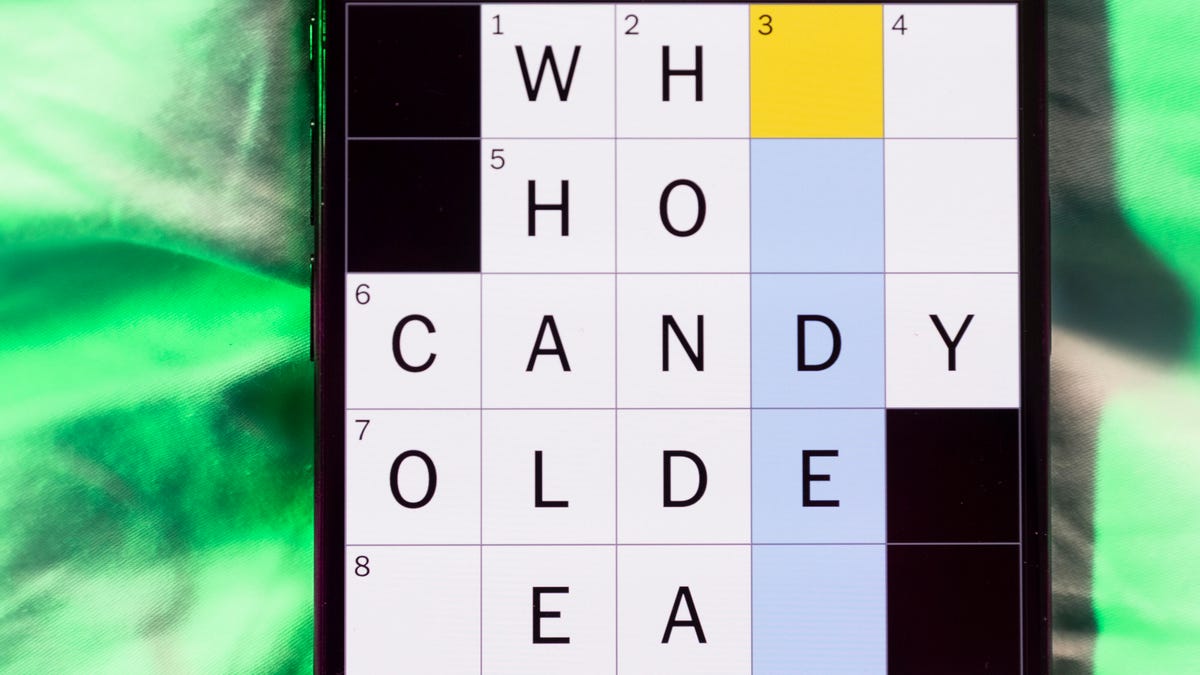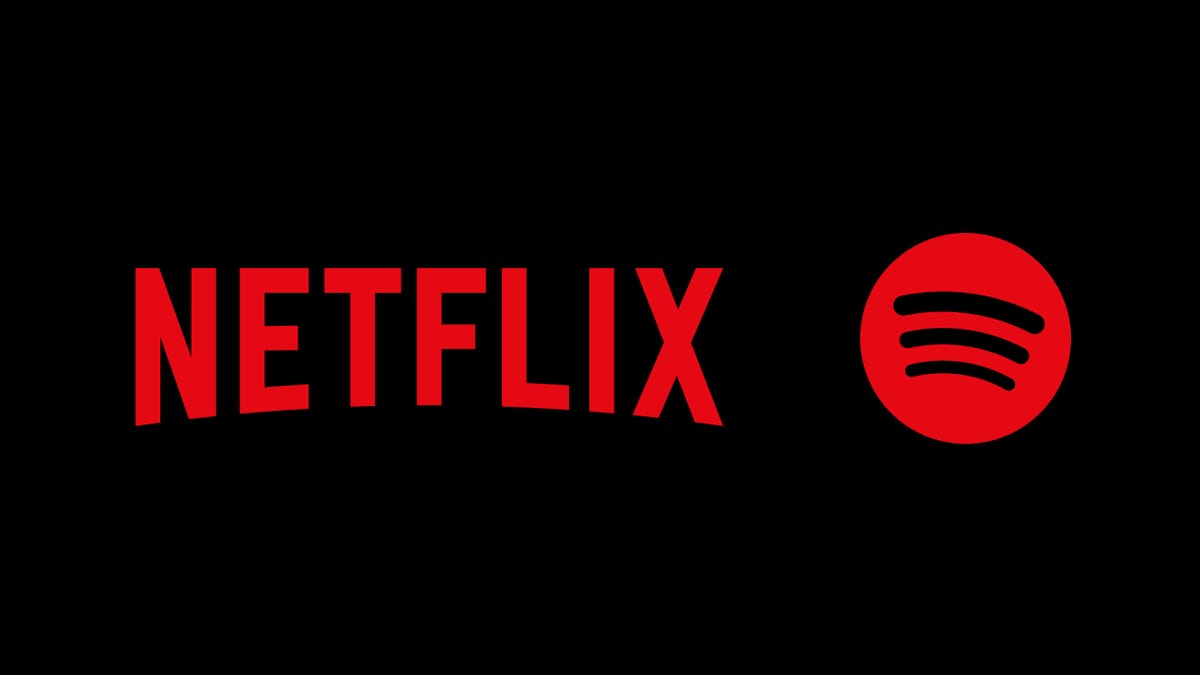Technologies
Biggest Games Coming in 2023: All the Release Dates You Need to Know
The Legend of Zelda, Starfield, Final Fantasy 16 and much, much more.

The last couple of years have been hard on the games industry. The COVID-19 pandemic has disrupted development, leading to several gamesbeing delayed. But the losses of 2021 and 2022 are the gains of 2023, because we a lot to look forward to this year. This list of release dates for notable 2023 titles is already packed, but for now we’ve only added games set for launch in the first half of the year. More will be added as the year progresses and we get more concrete dates.
2022 was a pretty solid year for games. We got an open-world Pokemon, the long-awaited sequel to God of War and, of course, the tour de force that was Elden Ring. Only time will determine if the games of 2023 reach those same heights, but the numbers are certainly in our favor. Let’s just hope Zelda doesn’t get delayed again.
Here are all the big PlayStation, Xbox and Nintendo Switch games to keep track of in 2023.
Fire Emblem Engage (Switch)
Release date: Jan. 20.
The first big video game of 2023 is a big one, and I do mean big. Fire Emblem games are massive: Engage is a follow up to 2019’s Three Houses, a chunky RPG that players could sink over 100 hours into without seeing everything. Three Houses was loaded with critical acclaim and Engage will hopefully recapture both the scale and the magic of its predecessor. Engage features characters from the series’ long history — which at least means newbies can get properly acquainted with Super Smash Bros. characters like Marth, Corrin and Blyeth.
Forspoken (PS5, PC)
Release date: Jan. 24.
Excitement for Forspoken should straight away come with the asterisk that feedback to the game’s demo was mixed with both compliments and criticisms. But it’s worth paying attention to, even rooting for, because of the simple fact that it’s a new IP from Square Enix. In an industry filled with sequels and spinoffs, that has to count for something.
Forspoken is a fish-out-of-water tale that follows New Yorker Frey Holland, who somehow manages to get plunged into the fantastical land of Athia. Classic stuff. It’s developed by many of the same people who created Final Fantasy 15, something that’s immediately obvious when you see its real-time action in motion. Good luck, Frey, I hope you pull through. Forspoken will launch on PC and PS5, where it’s a console exclusive for at least two years.
Hogwarts Legacy (PS5, Xbox Series X|S, PC)
Release date: Feb. 10.
Third time’s the charm is the magic rule, so hopefully Hogwart’s Legacy doesn’t break it. Set in the Harry Potter universe, this RPG was first announced in 2020 with a release date set for 2021. It was then delayed to 2022. But that didn’t pan out, and last year Hogwart’s Legacy was delayed once more. Its latest release date is Feb. 10. Set about 100 years before The Boy Who Lived and He Who Shall Not Be Named, Hogwart’s Legacy is a tantalizing concept: A big open-world game set at the most famous school of witchcraft and wizardry.
Games based on blockbuster franchises can be hit or miss. Hopefully all the delays are a sign that this promising idea has been given the love and nurturing it needs to succeed.
Note: The PS4 and Xbox One versions of Hogwarts Legacy will be released on April 4, with a Switch port coming on July 25.
Horizon Call of the Mountain (PSVR 2)
Release date: Feb. 22.
One of Sony’s goals for 2023 is to make VR happen. To help do that, it’s enlisted Guerilla Games to make Horizon Call of the Mountain, a virtual reality spinoff to Horizon Zero Dawn and Horizon Forbidden West. You won’t be playing as Aloy, but will rather take up the hunter bow of Ryas, a member of the Shadow Carja tribe that featured prominently in Zero Dawn. Being a VR game, Call of the Mountain looks to feature less open-world roaming, but more exhilerating climbing, exploration and bow-based combat. It launches alongside the PlayStation VR2 headset on Feb. 22.
Wo Long: Fallen Dynasty (PS4, PS5, Xbox One, Xbox Series X|S, PC)
Release date: March 3.
Wo Long: Fallen Dynasty is a new IP with a pedigree: It’s developed by Team Ninja, the gang behind the acclaimed Ninja Gaiden and the even more acclaimed Nioh franchise. Wo Long is set during the Three Kingdoms era of Chinese history — roughly 220 AD — but features plenty of fantastical (and grotesque) beasts to slay. Like Nioh, this looks to be inspired by Dark Souls, meaning you should be prepared to die. A lot.
Resident Evil 4 Remake (PS4, PS5, Xbox Series X|S, PC)
Release date: March 24.
After the roaring success of the Resident Evil 2 Remake, Capcom is at it again. Originally released in 2005 as a GameCube exclusive (imagine that) Resident Evil 4 is the most acclaimed title in the illustrious franchise. Because of its fanfare, Capcom has ported and remastered Resident Evil 4 over and over again. Hopefully you don’t have RE4 fatigue, because it’s now getting proper remake treatment.
If you’ve never played Resident Evil 4, and if Capcom can do for it what it did for Resident Evil 2, this is sure to be a must-play.
Crime Boss: Rockay City (PC, PS5, Xbox Series X|S)
Release date: March 28.
We know Rockstar is developing Grand Theft Auto 6, but it’s still yonks away. Crime Boss: Rockay City, by 505 Games, is clearly inspired by GTA, and may help fill the GTA-shaped hole in your heart while you wait for the next big open-world crime bonanza.
Crime Boss: Rockay City is a first-person game about 90’s Florida turf wars, and it’s designed to be played alone or with friends. The most attention-grabbing feature of the game is its celeb-heavy cast. Kill Bill’s Michael Madson stars as the protagonist, Travis Barker, and the supporting cast features Kim Basinger, Danny Trejo, Chuck Norris and Vanilla Ice.
The Legend of Zelda: Tears of the Kingdom (Switch)
Release date: May 12.
Not much needs to be said here. The Legend of Zelda is one of gaming’s most renowned franchises, and 2017’s Breath of the Wild is incontestably one of the greatest games ever. Nintendo has a habit of delaying Zelda games — Tears of the Kingdom has already been delayed once — so hopefully the May 12 date sticks.
Suicide Squad: Kill the Justice League (PS5, Xbox Series X|S, PC)
Release date: May 26.
Last year’s Gotham Knights was unable to step out of Batman’s Arkham City-sized shadow, so now the Suicide Squad has a perfect opportunity to upstage the good guys… and then kill them.
Though Gotham Knights was a sequel of sorts to Batman’s Arkham series, Suicide Squad: Kill the Justice League is its true spiritual successor. It’s developed by Rocksteady, the same studio that developed the Arkham trilogy. The game lets you play as four members of the Suicide Squad — Harley Quinn, Deadshot, Captain Boomerang and King Shark — and includes Kevin Conroy’s last recorded performance as Batman.
Street Fighter 6 (PS4, PS5, Xbox One, Xbox Series X|S, PC)
Release date: June 2.
Street Fighter 6 is the first major new game in the franchise since 2016. As you can imagine, it’s expected to have dramatically improved visuals. There will also be five new characters, with more to potentially be announced. Other new additions include a single-player adventure mode and in-game commentary, a welcome feature for esports fans. But as nice as those extras are, the Street Fighter series is all about its rock-solid fighting system, which is simple enough for beginners to have fun but deep enough that dedicated fighters will spend years to mastering it. As long as that still works, this should be a banger.
Diablo 4 (PS4, PS5, Xbox One, Xbox Series X|S, PC)
Release date: June 6.
Last year we got an updated version of Overwatch, now it’s Diablo’s turn to get supercharged. Diablo 4, the latest major installation in Activision Blizzard’s long-running action RPG franchise, couldn’t come sooner. Fans have been awaiting Diablo 4’s arrival since its announcement in 2019, a whole pandemic ago.
Final Fantasy 16 (PS5)
Release date: June 22.
I’m going to be honest with you, I’ve watched various Final Fantasy 16 trailers several times and I still have no clue what this game is about. There’s a fight going on between six different countries, and somehow giant summons like Ifrit are involved. I’m not super sure, but the fact that Final Fantasy is coming to a new console generation is reason enough for this game to turn into a massive cultural event. (It’ll be a PS5 exclusive until the end of the year.) It may also be the first of two big Final Fantasy releases this year, with Final Fantasy 7 Remake’s sequel potentially — but probably not — hitting during the holiday season.
Hollow Knight: Silksong (Switch, PS4, PS5, Xbox One, Xbox Series X|S, PC)
Release date: First half of 2023.
Hollow Knight, launched in 2017, was praised for being one of the best Metroidvania games without the words «Metroid» or «Vania» in its title. In 2023, indie developer Team Cherry wants to do it all again. You’ll play as a different character — a boss you fought in the original game — but the core gameplay here is the same. Explore, fight a bunch of dudes, get lost, explore some more, repeat a few times and ultimately succeed. I, for one, am ready.
Hollow Knight: Silksong was announced on June 12, 2022, and Microsoft said it would launch within a year of that date.
Redfall (PC, Xbox Series X|S)
Release date: First half of 2023.
Redfall looks like a mix of Deathloop and The Last of Us. It takes place in Redfall, a fictional Massachusetts town that was flowing along swimmingly until a swarm of vampires took it over and cut it off from the outside world. Like in The Last of Us, you’ll explore a town brimming with remnants of the before times, but the game looks to have a less serious, more quirky attitude about it, similar to Deathloop. That makes sense, as Redfall is developed by Arkane Austin, a sister studio to Deathloop creators Arkane Lyon.
Forza Motorsport (Xbox Series X|S, PC)
Release date: Second half of 2023.
Forza Horizon brought the driving franchise’s open-world exploration to the Xbox Series X|S, but in 2023 we go back to Forza’s driving-sim roots. This game will be more similar to Gran Turismo 7, which hit the PS5 last year, trading open roads for closed tracks. A little more finesse, a little more professional. No matter their flavor, Forza games can be relied on to provide some delicious drives — and 2023’s Forza Motorsport should be the prettiest one yet.
Starfield (Xbox Series X|S, PC)
Release date: First half of 2023.
Like The Legend of Zelda: Tears of the Kingdom, Starfield was one of 2022’s great delays. Originally slated for a Nov. 11 release, it was pushed back to the «first half of 2023.» It’s for the best: Starfield is a game from the same Bethesda studio that made Skyrim and Fallout 4.
If done right, Starfield could be a game that people will be playing for years to come. There are apparently 1,000 planets to explore, so an extra few layers of polish will go a long way. If Tears of the Kingdom is most predicted to be 2023’s best game, Starfield may be its most ambitious.
Assassin’s Creed Mirage (PS4, PS5, Xbox One, Xbox Series X|S, PC, Luna)
Release date: 2023.
Ubisoft is taking an unusual approach with Assassin’s Creed Mirage. After years of «bigger is better,» Ubisoft is now scaling down and trying the «less is more» approach. In announcing Assassin’s Creed Mirage, the company boasted it to be a «shorter, more narrative-driven game than recent entries in the series.» Sounds good to me. Mirage is set in 9th century Baghdad, a couple decades before Valhalla, and stars Basim, who played a supporting role in that game.
Lies of P (PS4, PS5, PC, Xbox One, Xbox Series X|S)
Release date: 2023.
Lies of P sounds gnarly as hell: It’s the story of Pinocchio reimagined as a 2023 Dark Souls. Your goal is to find Mr. Geppetto, and a synopsis for the game talks about needing to lie your way through a rough city to do that. That’s all well and good, but from Lies of P’s trailer it looks like combat will be the real star of the show here.
Spider-Man 2 (PS5)
Release date: Fall 2023.
I didn’t like 2018’s Spider-Man as much as I’d hoped to: It was good, but no Batman: Arkham City. Almost everyone else loved it, though: Spider-Man has an 8.7 rating on Metacritic, and beat out Arkham City to become the best-selling superhero game ever. Spider-Man 2 will launch in late 2023 exclusively for the PS5, and will feature both Peter Parker and Miles Morales, who starred in his own 2020 spin-off. The Spider-Men will need to combine their powers in this game, because there’s a wild Venom on the loose.
Technologies
We May Know What the Next Nintendo Switch 2 Pokemon Game Will Be Called
A massive leak reveals potential details about the 10th generation of Pokemon games coming to the Nintendo Switch 2, including big changes.

A new Pokemon game, Pokemon Legends: Z-A, will be released for the Nintendo Switch and Switch 2 on Thursday, but a recent leak might have revealed info about what’s coming next from the creators of the franchise. The names of the next games headed to the Switch 2, as well as some of the big changes to the Pokemon formula, may have been part of the leak.
The leak showed up on X Monday from the account Centro Leaks, as first spotted by Insider Gaming. Data about the upcoming games reportedly stems from a hack of the servers of the franchise developer Game Freak that happened in August 2024, referred to online as the Teraleak, that included the source code for the upcoming Pokemon Legenda: Z-A.
Among the information shared by the account was the possible name for what would be the 10th generation of Pokemon games that would come to the Switch 2 next year: Pokemon Wind and Pokemon Wave.
The Pokemon Company didn’t immediately respond to a request for confirmation about this leak.
Pokémon Gen 10:
Pokémon Wind and Pokémon Waves
Theme: Infinity
Directed by Shigeru Ohmori— Centro LEAKS (@CentroLeaks) October 13, 2025
According to the leak, Pokemon Wind/Wave is inspired by the Southeast Asia region and will feature a jungle-themed environment. It could also feature a new mechanic referred to as a Seed Pokemon, which is reportedly a special Pokemon that is heavily involved in the story and must be raised by the player. As it evolves, it will have a unique look that is procedurally generated, and once it’s fully evolved, it will allow the player to gain access to an island where they can find the main legendary Pokemon of the game.
The main theme of Pokemon Wind/Wave is the concept of infinity, according to the leak. This would match with the reported focus of procedurally generated content, not only with the special Seed Pokemon, but also with the islands of the game being procedurally generated, so each game is unique and could continue to grow with no end.
Also included in the leak were other details, including Pokemon on the overworld being interactable, weather affecting gameplay in some way, 18 new challenges for players instead of traditional gyms, and a few screenshots of the game in development that are still available to see at the PokeLeaks subreddit. There was also info that the 11th-generation Pokemon game could be released in 2030.
It is unlikely that Nintendo, The Pokemon Company or Game Freak will confirm the details of the leak. Expect to see the official announcement early next year, with the fall being the most likely release window for Pokemon Wind/Wave.
Technologies
Today’s NYT Mini Crossword Answers for Wednesday, Oct. 15
Here are the answers for The New York Times Mini Crossword for Oct. 15.

Looking for the most recent Mini Crossword answer? Click here for today’s Mini Crossword hints, as well as our daily answers and hints for The New York Times Wordle, Strands, Connections and Connections: Sports Edition puzzles.
Need some help with today’s Mini Crossword? It includes both the first and last name of one of my favorite chefs of all time — maybe yours, too. Read on for the answers. And if you could use some hints and guidance for daily solving, check out our Mini Crossword tips.
If you’re looking for today’s Wordle, Connections, Connections: Sports Edition and Strands answers, you can visit CNET’s NYT puzzle hints page.
Read more: Tips and Tricks for Solving The New York Times Mini Crossword
Let’s get to those Mini Crossword clues and answers.
Mini across clues and answers
1A clue: Chromebooks, but not MacBooks
Answer: PCS
4A clue: «Yippee!»
Answer: WAHOO
6A clue: Reveal, as juicy gossip
Answer: SPILL
7A clue: With 2-Down, chef who helped popularize chicken cordon bleu in the U.S.
Answer: JULIA
8A clue: Toss in
Answer: ADD
Mini down clues and answers
1D clue: Toss in
Answer: PAPUA
2D clue: See 7-Across
Answer: CHILD
3D clue: State of matter for most elements at room temperature
Answer: SOLID
4D clue: Business-focused newspaper, for short
Answer: WSJ
5D clue: Hello, in Portuguese
Answer: OLA
Technologies
Want to Watch a Podcast? Netflix and Spotify Partner to Bring Video Podcasts to Streaming
Starting in early 2026, Netflix subscribers in the US will be able to watch select Spotify Studios and Ringer podcasts directly on the streaming platform.

Netflix and Spotify are teaming up to blur the line between streaming and podcasting. The two companies announced a new partnership that will bring a curated slate of Spotify’s top video podcasts, including shows from Spotify Studios and The Ringer, to Netflix starting in early 2026. The goal is to make popular podcasts as watchable as TV, expanding both services’ reach into sports, culture, lifestyle and true crime.
Don’t miss any of our unbiased tech content and lab-based reviews. Add CNET as a preferred Google source.
The deal marks Spotify’s most significant distribution push beyond its own platform, and for Netflix, it’s a new way to keep audiences engaged with talk-driven, low-cost programming. Early titles include The Bill Simmons Podcast, The Rewatchables, Dissect, Conspiracy Theories and Serial Killers, among others. You can find the complete list here.
More shows and genres are expected to be added over time.
Netflix says the partnership complements its library of documentaries and talk shows, offering «fresh voices and new perspectives.» Spotify, meanwhile, described it as «a new chapter for podcasting,» giving creators access to Netflix’s global audience while expanding discovery for listeners who prefer watching podcasts.
The rollout will begin in the US early next year, with additional markets to follow in 2026.
-

 Technologies3 года ago
Technologies3 года agoTech Companies Need to Be Held Accountable for Security, Experts Say
-

 Technologies3 года ago
Technologies3 года agoBest Handheld Game Console in 2023
-

 Technologies3 года ago
Technologies3 года agoTighten Up Your VR Game With the Best Head Straps for Quest 2
-

 Technologies4 года ago
Technologies4 года agoVerum, Wickr and Threema: next generation secured messengers
-

 Technologies4 года ago
Technologies4 года agoBlack Friday 2021: The best deals on TVs, headphones, kitchenware, and more
-

 Technologies4 года ago
Technologies4 года agoGoogle to require vaccinations as Silicon Valley rethinks return-to-office policies
-

 Technologies4 года ago
Technologies4 года agoOlivia Harlan Dekker for Verum Messenger
-

 Technologies4 года ago
Technologies4 года agoiPhone 13 event: How to watch Apple’s big announcement tomorrow
